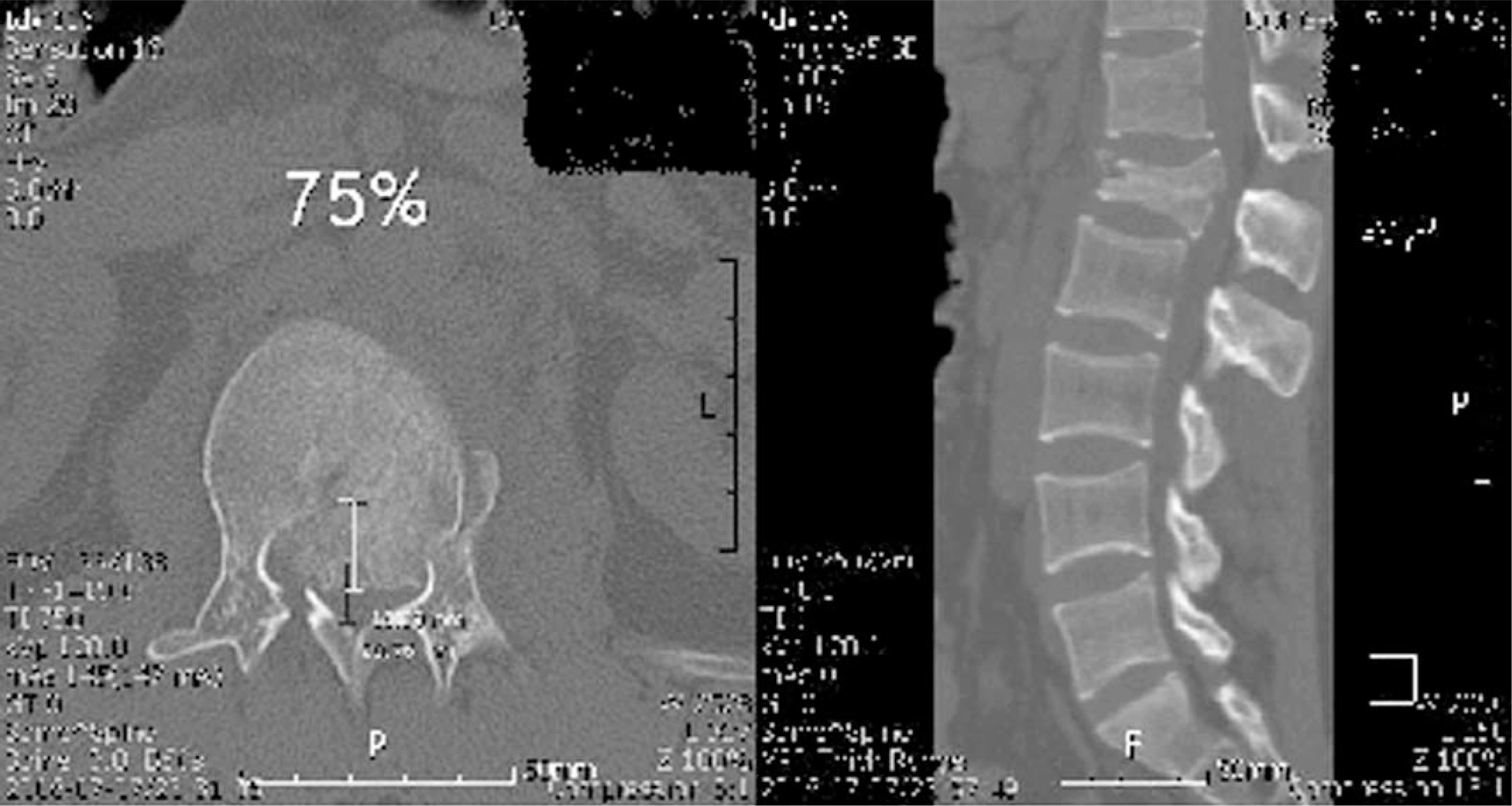Abstract
Objectives
To determine the relationship between the classifications of unstable burst fractures on the thoracolumbar region, radiologic studies, signal change area on MRA and analysis of the prognostic factors.
Summary of Literature Review
MRI is the first imaging modality that visualizes the extent of spinal cord derangement directly and it has the potential to provide an accurate diagnosis and prognosis.
Materials and Methods
From March 1998 to September 2006, 39 patients who were eligible for a follow up of more than 1 year with an unstable burst fracture on the thoracolumbar region were studied. With these cases, The size of the bone fragment at the initial injury, signal change area on MRI, time to surgery, reduction rate of the bone fragments, recovery of the posterior curvature of the vertebrae and height of the vertebral body were analyzed.
Results
The mean fracture size rate, average time to surgery, reduction rate of bone fragment and the recovery rate of the height of the vertebral body was 46.1±12.8%, 17±4.5 hours, 35.2±10.1%, and 57.9±17.4%, respectively. The data shows that the time elapsed until surgery had no relationship with the prognosis (P=0.317). Injuries with broad signal changes on MRI were not associated with the reduction rate of bone fragments, recovery of posterior curvature of the vertebrae and the height of the vertebral body.
Go to : 
REFERENCES
01). Kim YT., Lee CS., Kim CH., Joo DM. Surgical treatment of unstable thoracolumbar fractures with posterior approach. J. of Korean Orthop. Assoc. 1996. 34:651–656.
02). Willen J., Anderson J., Toomoka K., Singer K. The natural history of burst fractures at the thoracolumbar junction. J spinal disorders. 1990. 3:39–46.

03). Bohlman HH., Kirkpatrick JS., Delamarter RB., Leventhal M. Anterior decompression for late pain and paralysis after fractures of the thoracolumbar spine. Clin Orthop. 1994. 300:24–29.

04). Tasdemiroglu E., Tibbs PA. Long-term follow-up results of thoracolumbar fractures after posterior instrumentation. Spine. 1995. 20:1704–1718.

05). Yoon HK., Jeon HS., Cho KN., Kang SI. Prognotic factors to final results after conservative or Surgical treatment of thoracolumbar burst fractures. J. of Korean Spine Surg. 1998. 5:215–223.
06). Chung JH., Yoon SH., Park HC., Park CO., Kim EY., Ha Y. Analysis of factors related to neurological deficit in thoracolumbar fractures. J Korean Neurosurg. 2007. 41:1–6.
07). Haluk Agus, C. Kayali, M. Arslantas. Nonoperative treatment of burst-type thoracolumbar vertebra fractures: clinical and radiological results of 29 patients. Eur Spine J. 2005. 14:536–540.
08). Carl AL., Mstsumoto M., Whalen JT. Anterior dural laceration caused by thoracolumbar and lumbar burst fractures. J Spinal Disord. 2000. 13:399–403.

09). Keenen TL., Antony J., Benson DR. Dural tears associated with lumbar burst fractures. J Ortho Trauma. 1990. 4:243–245.

10). Aydinli U., Karaeminogullari O., Tiskaya K., Ozturk C. Dural tears in lumbar burst fractures with greenstic lamina fracture. Spine. 2001. 26:410–415.
11). Pau A., Silvestro C., Carta F. Can lacerations of the thoracolumbar dura be predicteed on the basis of radiological patterns of the spinal fractures? Acta Neurochir. 1994. 129:186–187.
12). Silvestro C., Francaviglia N., Bragazzi R., Piatelli G., Viale GL. On the predictive value of radiological signs for the presence of dural lacerations related to fractures of the lower thoracic or lumbar spine. J Spinal Disord. 1991. 4:49–53.
Go to : 
 | Fig. 2.AP and lateral views of preoperative state, kyphotic angle was 24.8 degrees, reserver rate was 24%. |
 | Fig. 3.Immediately postoperative state, kyphotic angle was 10.6 degrees, reserver rate was 37%. |




 PDF
PDF ePub
ePub Citation
Citation Print
Print





 XML Download
XML Download